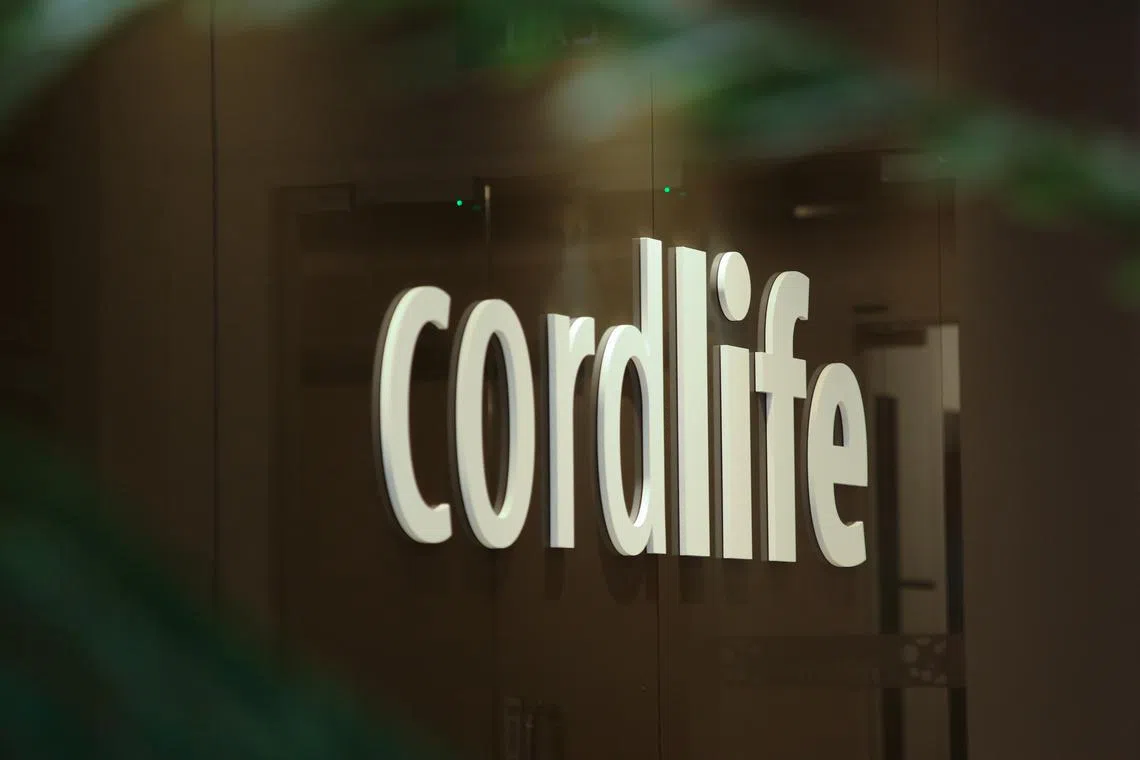Cordlife clients can transfer cord blood units, but may have to pay thousands in the process
Sign up now: Get ST's newsletters delivered to your inbox

Some parents have shown interest in going ahead with a transfer, with Cordlife’s competitors receiving multiple inquiries since the saga first broke.
PHOTO: LIANHE ZAOBAO
Follow topic:
SINGAPORE – Disgruntled Cordlife clients who want to transfer their cord blood units to another cord blood bank can do so, with the three other cord blood banks in Singapore ready to take in transfer requests.
But parents will have to cough up thousands of dollars for the process – which would include transfer fees, transport costs of a medical courier, storage fees and possible additional tests requested by the new facility.
On top of that, they have been cautioned about the logistical complexity of the transfer.
Despite these hurdles, some parents have shown interest in going ahead with the transfer, with Cordlife’s competitors receiving multiple inquiries since the saga first broke.
Processes at the company have been in the spotlight after it was revealed on Nov 30, 2023, that cryopreserved cord blood units in seven of its 22 storage tanks were exposed
Cord blood units have to be stored at temperatures no higher than minus 150 deg C.
About 7,500 cord blood units in two tanks and in a dry shipper – a container used to transport cord blood units at extremely low temperatures – have been deemed non-viable and unlikely to be suitable for stem cell transplants.
The company is now facing pressure on multiple fronts – including investigations by the police and health authorities and legal action from aggrieved customers.
The Ministry of Health extended the firm’s suspension for up to three months till Sept 15, so it has more time to validate its cord blood processing system.
In response to queries from The Straits Times, the Republic’s only public cord blood bank, Singapore Cord Blood Bank (SCBB), said it has received an average of 10 to 15 inquiries a month for transfer of cord blood units since November.
Private cord blood banks Stemcord and Cryoviva have received 50 and 10 inquiries respectively.
Cordlife said that as at May 31, it has not received an official request for transfer.
Detailing the complex process of transfer, a Cordlife spokesman said the units have to be maintained at temperatures no higher than minus 150 deg C, which would require the use of a dry shipper and a qualified medical courier.
Risks include temperature fluctuations, exposure to warmer temperature, and loss, damage or contamination while in transit.
Mr Rajiv Kumar, Cryoviva’s senior manager of quality assurance, said the company has capacity for 4,000 cord blood units, and is prepared to order new cryogenic storage tanks if needed.
Stemcord’s chief executive Valerie Wong said that while the company has the capability and capacity to accept cord blood units from other banks, it is more important to determine if the existing cord blood units are still in good condition.
If clients would still like to go ahead with the transfer, Cordlife will not be conducting any tests on the cord blood, its spokesman said.
Instead, it will assist clients by providing all the results of the tests conducted on both the cord blood and the maternal blood at the point of collection and storage.
Such information includes blood type, cell count and viability of the cord blood unit, as well as results of screening for viruses, bacteria and fungi. But that information may not be enough for the receiving cord blood banks.
Two cord blood banks – SCBB and Cryoviva – have indicated that cord blood units have to pass viability tests before being accepted for transfer.
Stemcord’s Ms Wong said that before deciding if the company would accept a cord blood unit, it would conduct risk assessments by studying previous records such as the collection data, freezing data, storage temperatures, and whether the tank recorded several temperature fluctuations.
It may also conduct viability and potency tests.
Parents would have to bear the costs of the additional tests, and a Cordlife spokesman said the company will assist them in identifying third-party labs that can carry out the tests.
To transport the cord blood units from Cordlife to another bank, parents will have to pay for a third-party medical courier.
“The company can assist in identifying a qualified medical courier for the clients. However, the charges will be determined by the medical courier, which can vary depending on various factors specific to the client’s situation,” the Cordlife spokesman added.
On top of that, clients would have to pay a transfer fee to Cordlife. According to terms stated in customer contracts with Cordlife that ST has seen, it will cost parents $1,000 before GST.
When asked to confirm such charges, the Cordlife spokesman said any fees depend on the terms and conditions in each client’s service agreement.
If the receiving cord blood banks accept the transferred unit from Cordlife, parents would still have to pay storage fees at the new bank.
For Stemcord, there will be an enrolment fee of $1,950 and the upfront payment of storage fees of $275 per year before GST till the child is 21 years of age.
Cryoviva will not charge an enrolment fee for transfer clients, and its annual fees start from $150.
SCBB, which also offers private cord blood storing, said their fees vary from $2,500 to $5,000 depending on the tenure of storage.
Mr Richard Kwok, 47, a marketing director in the managed-healthcare industry who has his 16-year-old daughter’s cord blood unit stored at Cordlife, said he will not transfer the cord blood unit.
He said: “A portion of the unit’s specimen must be extracted to be tested for viability; after such extraction for testing, will there be enough for future uses?”
Another parent, Mr Koh Wei Ming, 42, who works in marketing, said given the options available, he will not move the units.
“While the option is there, it comes across as ‘do it at your own risk’... If Cordlife wants to make it good for parents, they should cover all costs if a parent decides to transfer. After all, it’s their mistake that got us in this position in the first place,” Mr Koh said.
Parents who want to transfer their units can reach out to their selected company. SCBB has put up an online form


